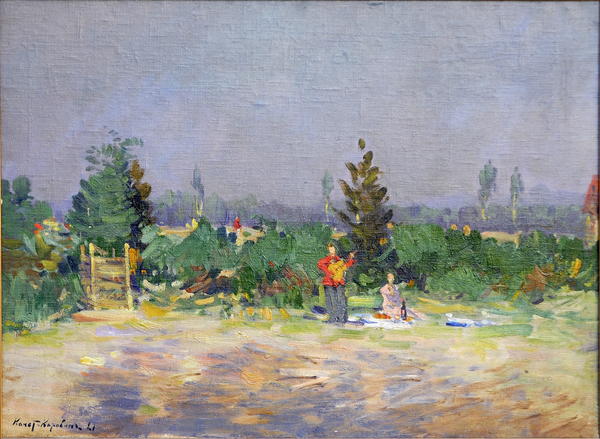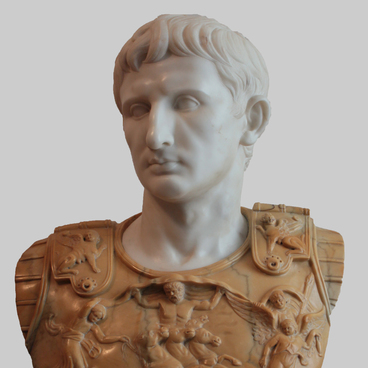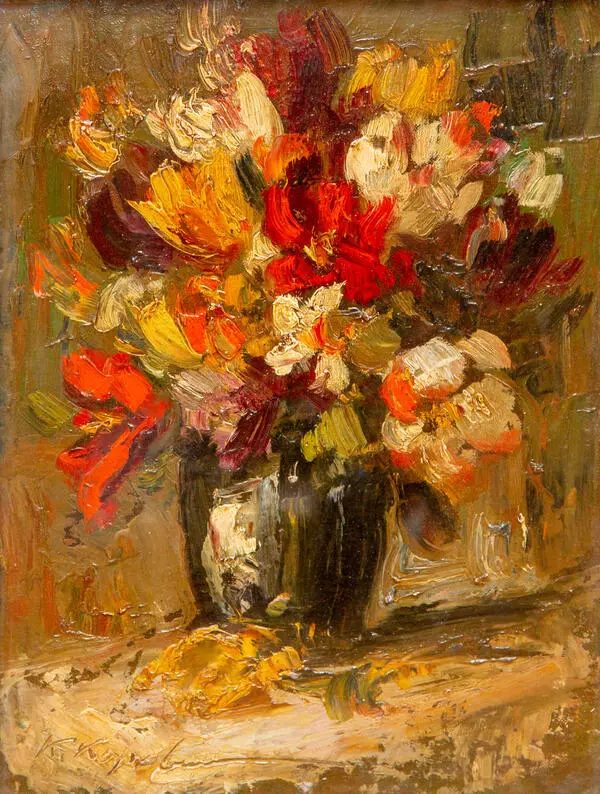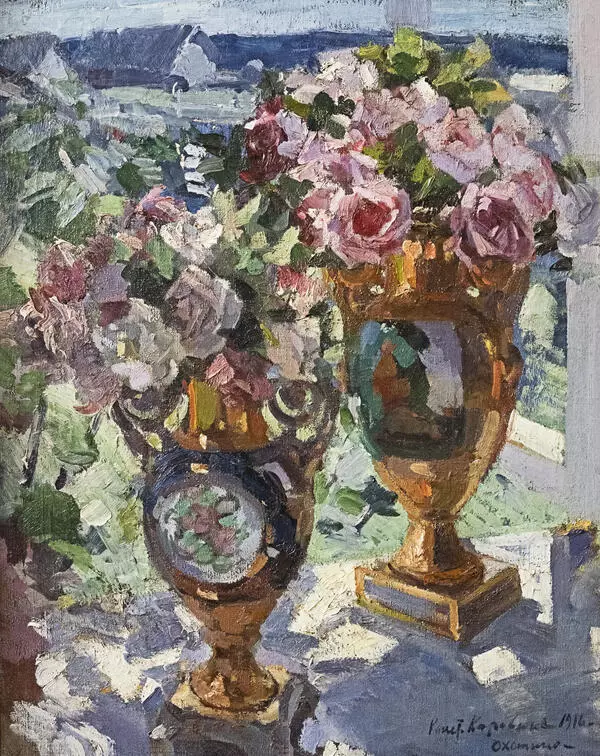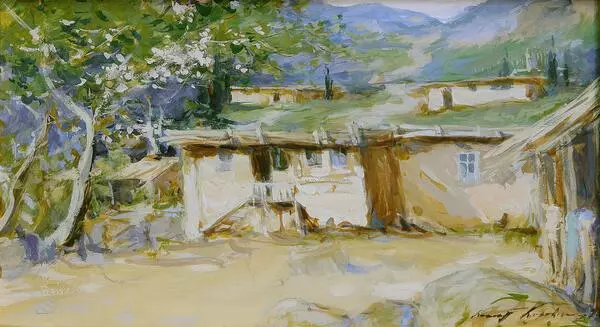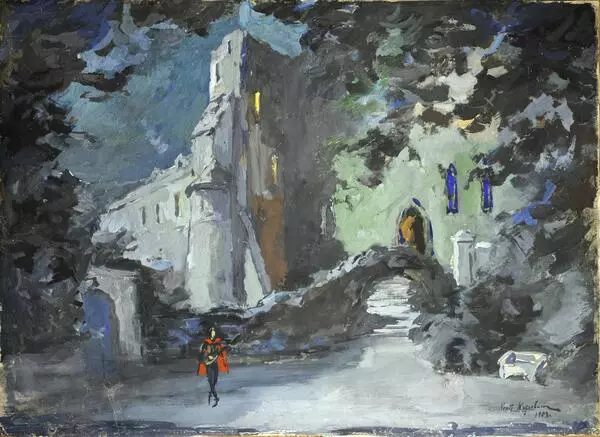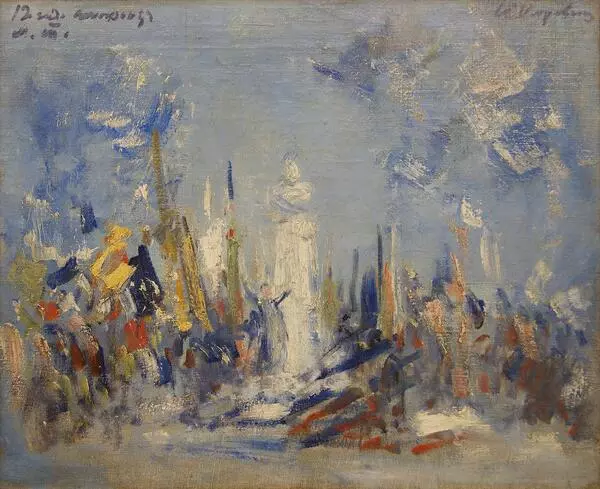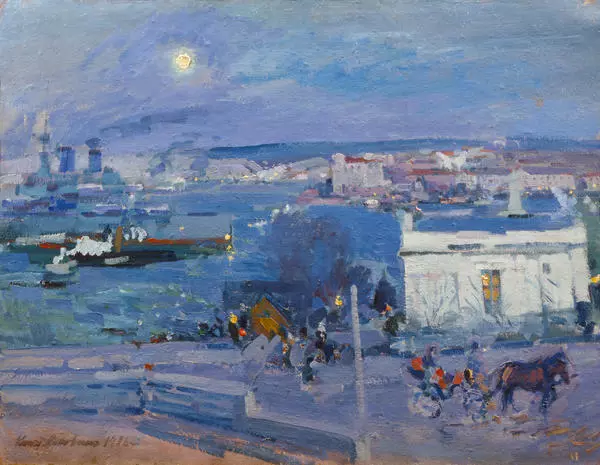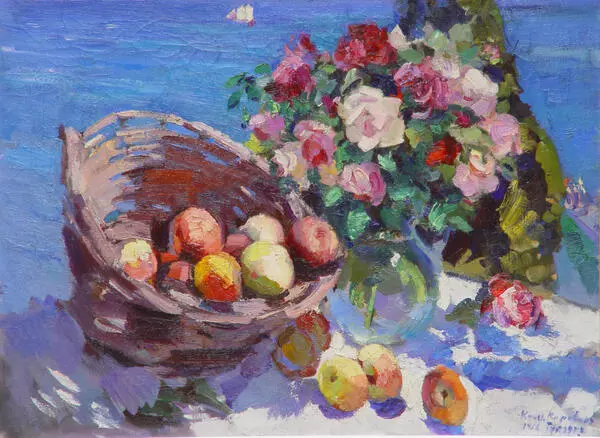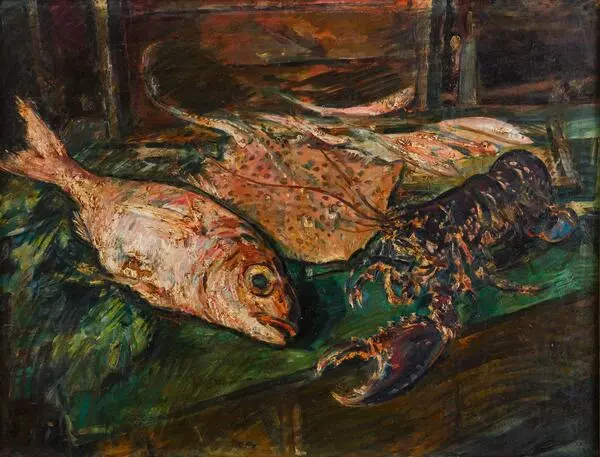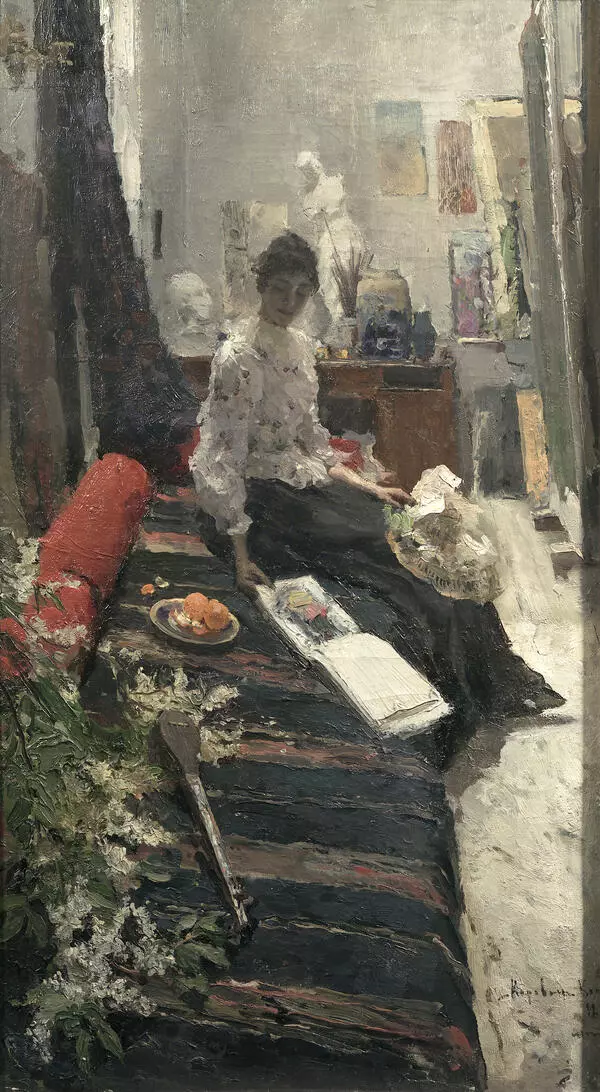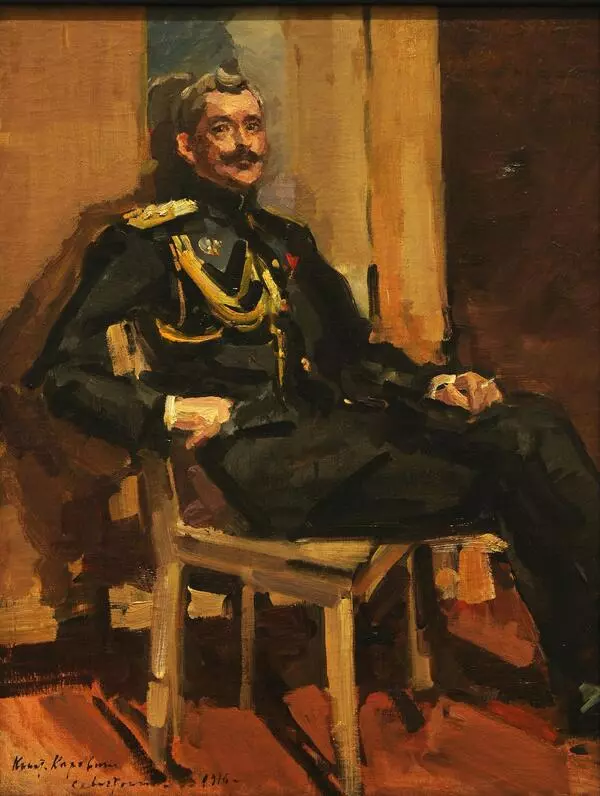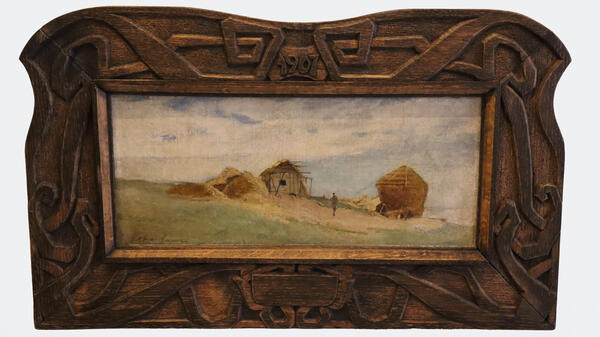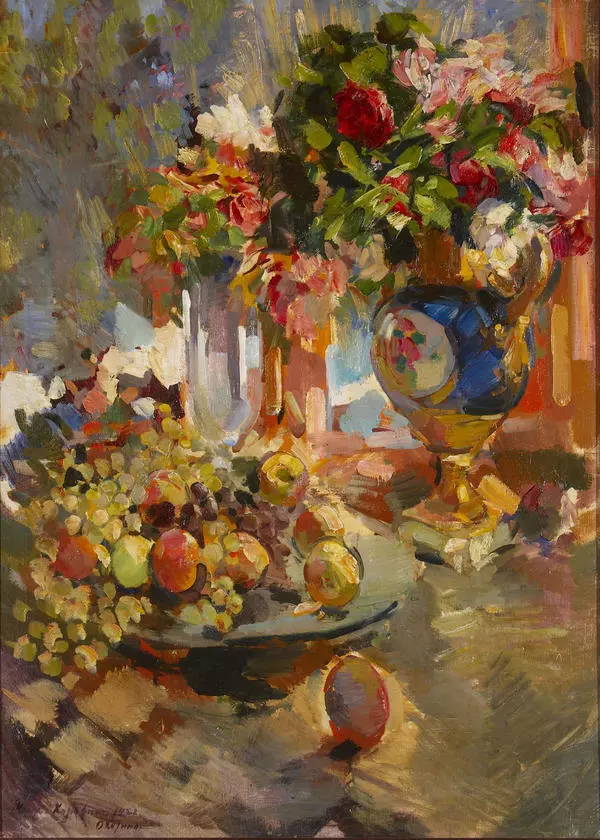The collection of the Stavropol Krai Museum of Fine Arts includes two paintings by Konstantin Korovin, the founder of Russian impressionism. He worked in all spheres of art — in easel, monumental and theatrical painting, in decorative and applied art and architecture.
Korovin studied at the Moscow School of Painting and Sculpture with artists Alexei Savrasov and Vasily Polenov, who gave him an interest in the Russian countryside. Korovin tried to complete his education at the Academy of Arts in St. Petersburg, but was disappointed in their teaching methods and dropped out of school.
In the early works in the 1880s-1890s Korovin strictly treated the drawing, used neat strokes, clear form and accurate tone relations. During this period Korovin formed his typical compositional technique with the upper point of view and the image of the village landscape with its attributes — wooden huts, sheds, oblique fences and stacked wood logs around them.
Korovin visited Europe several times, there he got acquainted with French impressionism and new techniques in painting. But unlike impressionists, Korovin worked with contrasting colors, did not dissolve the contours of objects in the air and often entered people into the landscape environment.
In the 1910s, he began to use more vivid colours and textured strokes. The painting Hot Day near Moscow is an example of creativity of the last two years of the artist’s stay in Soviet Russia. He left for France in 1922.
The genre village scene was drawn after returning to Moscow from Tver province, where the Korovin family lived from 1918 to the summer of 1921. The painting shows the artist’s characteristic upper point of view, wide texture stroke and bright colors. At a distance they merge into a harmonious whole, revealing the volume and composition. Korovin depicted a picnic scene — a guitarist and a woman sitting in front of an impromptu table. The composition is arranged as if the characters are on the stage. On the right side of the picture you can see the red sloping roof of the village house, and on the left side you can see the well log cabin. The contrast of the heavily overhanging purple sky over the burnt-out grass conveys the feeling of a sultry summer day.
Korovin studied at the Moscow School of Painting and Sculpture with artists Alexei Savrasov and Vasily Polenov, who gave him an interest in the Russian countryside. Korovin tried to complete his education at the Academy of Arts in St. Petersburg, but was disappointed in their teaching methods and dropped out of school.
In the early works in the 1880s-1890s Korovin strictly treated the drawing, used neat strokes, clear form and accurate tone relations. During this period Korovin formed his typical compositional technique with the upper point of view and the image of the village landscape with its attributes — wooden huts, sheds, oblique fences and stacked wood logs around them.
Korovin visited Europe several times, there he got acquainted with French impressionism and new techniques in painting. But unlike impressionists, Korovin worked with contrasting colors, did not dissolve the contours of objects in the air and often entered people into the landscape environment.
In the 1910s, he began to use more vivid colours and textured strokes. The painting Hot Day near Moscow is an example of creativity of the last two years of the artist’s stay in Soviet Russia. He left for France in 1922.
The genre village scene was drawn after returning to Moscow from Tver province, where the Korovin family lived from 1918 to the summer of 1921. The painting shows the artist’s characteristic upper point of view, wide texture stroke and bright colors. At a distance they merge into a harmonious whole, revealing the volume and composition. Korovin depicted a picnic scene — a guitarist and a woman sitting in front of an impromptu table. The composition is arranged as if the characters are on the stage. On the right side of the picture you can see the red sloping roof of the village house, and on the left side you can see the well log cabin. The contrast of the heavily overhanging purple sky over the burnt-out grass conveys the feeling of a sultry summer day.

